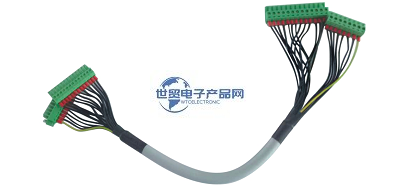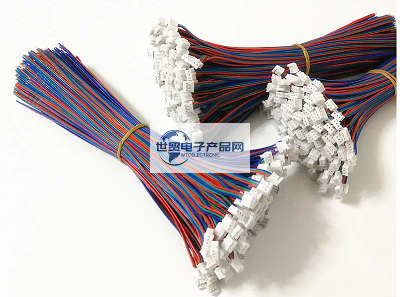Categorization:Product Information
Wiring harnesses play a bridge role in the electronics and general mechanical equipment industries, mainly used as wiring elements in circuits to connect various electrical equipment. It consists of terminal blocks, insulating wrapping materials, insulating sheaths and conductors. Wiring harnesses can be seen everywhere in life. For example, a wire harness in the host machine will be processed by a wire harness factory. Whether all kinds of electronic and electrical equipment can be connected stably and whether all kinds of interfaces can be accurate depends on whether every step of the wire harness processing process can be strictly controlled and no mistakes can be made. So what is the general processing flow of wiring harness before use?

-------------------------------------------------------------------------------------------------
1. Incoming material acceptance This equipment can be used to protect the environment. The incoming material needs to be checked to see if it meets ROHS standards. Materials must not contain hazardous substances such as lead, mercury, etc. 2. Wire feeding equipment 1. The main thing is to put the wire harness to be processed on the wire passing frame, and be careful not to scratch the surface of the wire. 2. For wire feeding, you need to place the wire on the wire feeder to fix it. 3. After that, it's time to cut the thread. Use a thread cutting machine to cut the thread to the appropriate length. Notes: (1) When doing this work, pay special attention not to scratch the surface of the wire or cut the copper wire, and the error of the peeling length should not exceed 1mm. (2) Peeling the wire. According to the requirements of the standard, peel off the insulating sheath of the length corresponding to the wire at the joint. The error should not exceed 1mm. (3) Twist the wire. Arrange and twist the wires at the joints without scratching the surface of the wires. Be sure to twist the copper wire tightly and do not allow loose wires to appear. (4) Terminal terminals. Connect the wires at the connectors to the plug terminals, paying attention to the width and height requirements. III. Assembly process The above process is completed, and the wire harness processing is basically completed, leaving only the assembly process. When assembling the product, the housing of the plastic plug must meet the torque required by the product. In addition, it is necessary to ensure that the wiring harness is electrically conductive. Use the instrument to turn on the wiring harness and test whether it is powered on to avoid open circuit, poor contact and poor insulation. After the test is completed, the wiring harness can be packaged and sealed. Tape the finished harness into a carton. The seal should be flat. When packing tape, the carton should be wrapped tightly and not dropped. The above is the three-step understanding of the wiring harness processing process, please refer to it.

---------------------------------------------------------------------------------------------------------------------------------------------------------------------------------------------------------------------------------------------------------------------------------------------------------- If you have related [connector wiring harness and cable production] purchasing/purchasing needs or want to purchase/understand which connector wiring harness and cable product solutions we can provide, please contact our business staff below; If you have related sales/resources and promotion needs of [Connector Wiring Harness and Cable Production], please click "→ Business Cooperation ←" to negotiate with a dedicated person!